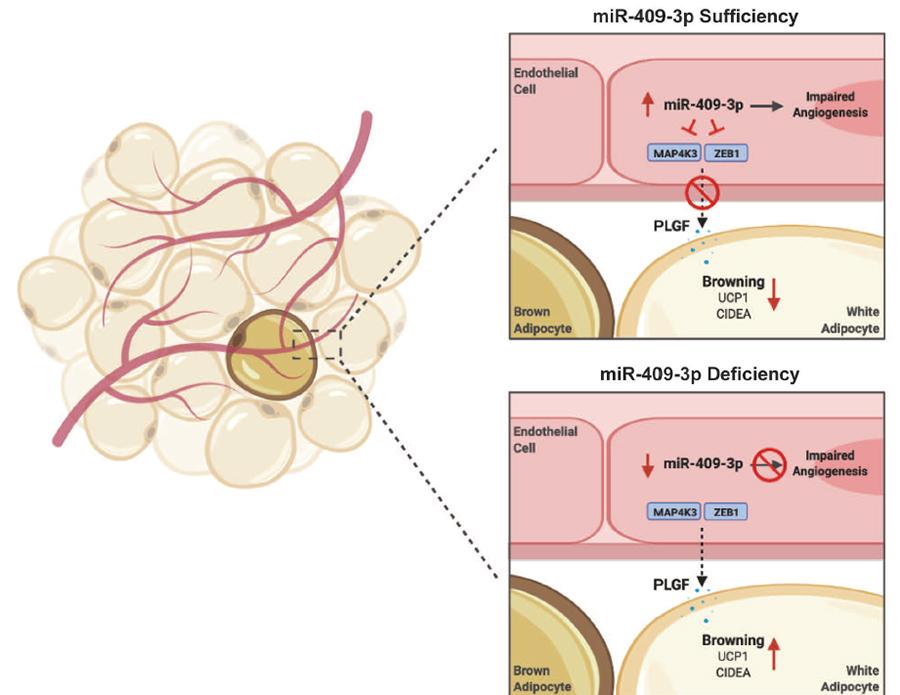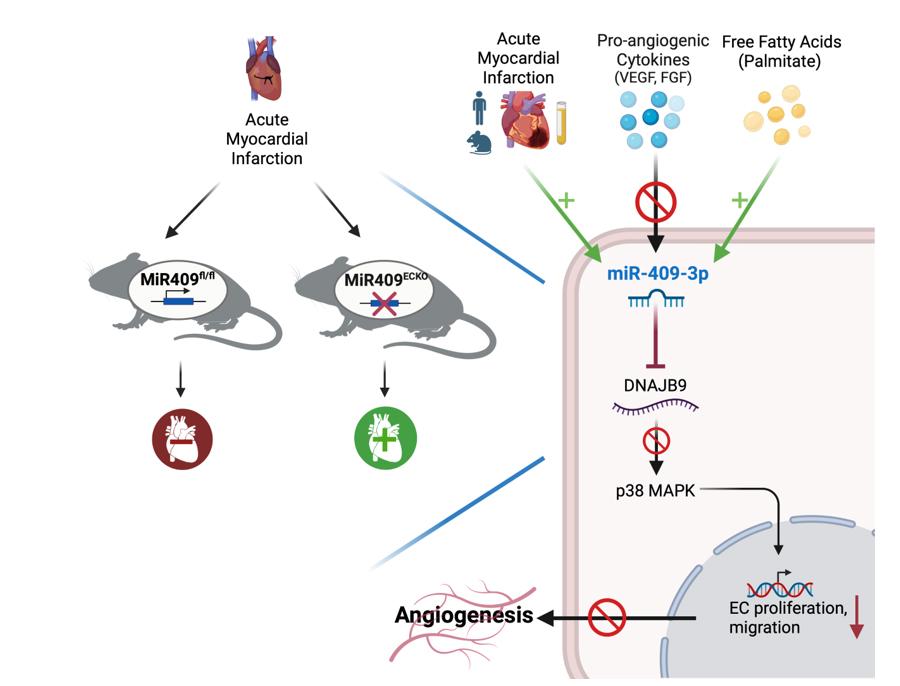The Basak Icli Lab
The Icli Lab focuses on the role of microRNAs, a class of non-coding RNAs, in ischemic vascular disease states such as myocardial infarction, diabetic wound healing, and obesity induced chronic inflammation. Our group study these complex disease states using diverse model systems including human plasma and tissue samples, human organoids, transgenic mouse models as well as primary cells. We take a multifaceted approach to delineate the disease mechanisms by utilizing state-of-the-art molecular biology techniques, bioinformatic approaches, bulk and single cell RNA-seq, immunohistochemistry, and live animal imaging.
Regulation of Brown Adipose Tissue Angiogenesis and Insulin Resistance
Endothelial cells (ECs) within the microvasculature of brown adipose tissue (BAT) are important in regulating the plasticity of adipocytes in response to increased metabolic demand by modulating the angiogenic response. However, the mechanism of EC-adipocyte crosstalk during this process is not completely understood. Using a number of profiling approaches, we have identified miR-409-3p and its targets ZEB1 and MAP4K3 as potent regulators of angiogenesis in obesity. MiR-409-3p neutralization improved BAT angiogenesis, glucose and insulin tolerance, and energy expenditure in mice with diet-induced obesity through EC-adipocyte cross talk via endothelial release of the pro-angiogenic growth factor, placental growth factor (PLGF). Our findings establish miR-409-3p as a critical regulator of EC-BAT crosstalk by modulating a ZEB1-MAP4K3-PLGF signaling axis, providing new insights for therapeutic intervention in obesity (Becker-Greene D, Li H, Perez-Cremades D,Wu W, Bestepe F, Ozdemir D, Niosi CE, Aydogan C, Orgill DP, Feinberg MW, Icli. 2021. MiR-409-3p targets a MAP4K3-ZEB1-PLGF signaling axis and controls brown adipose tissue angiogenesis and insulin resistance. Cell Mol Life Sci. Dec;78(23):7663-7679. doi: 10.1007/s00018-021-03960-1. Abstract)
Figure 1. Proposed mechanism of miR-409-3p regulation in obesity.
MicroRNA Regulation of Angiogenesis in Cardiometabolic Disease
Angiogenesis is critical for tissue repair following myocardial ischemia, a process which is exacerbated under insulin resistance or diabetes. MicroRNAs are regulators of angiogenesis. Using human plasma samples with acute coronary syndrome (ACS), genetic deletion of microRNA and human endothelial cells, we show that miR-409-3p improves angiogenesis and heart function in mice post-MI and targets the DNAJB9/p38 mitogen-activated protein kinase (MAPK) signaling pathway. Our findings unveil possible targets for future therapeutic modulation to improve angiogenesis and remodeling of the heart post-MI. (Bestepe F, Fritsche C, Lakhotiya K, Niosi CE, Ghanem GF, Martin GL, Pal-Ghosh R, Becker-Greene D, Weston J, Hollan JI, Risnes I, Rynning SE, Solheim LH, Feinberg MW, Blanton RM, Icli B, in press).
Figure 2. Proposed mechanism of miR-409-3p regulation in obesity


